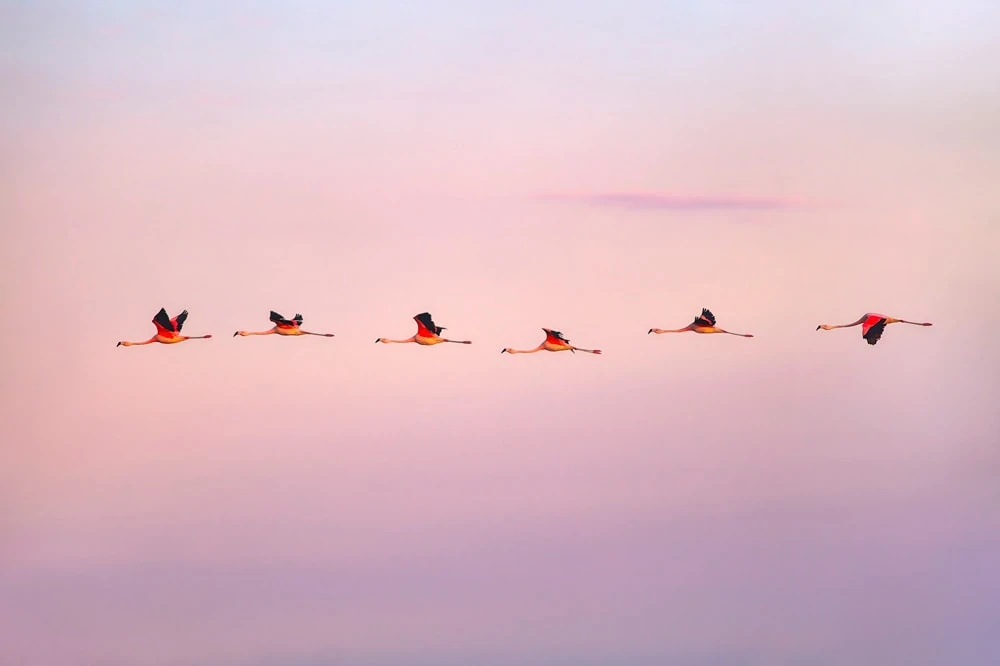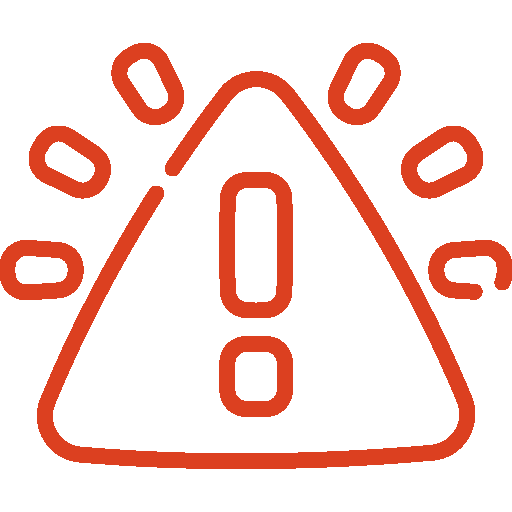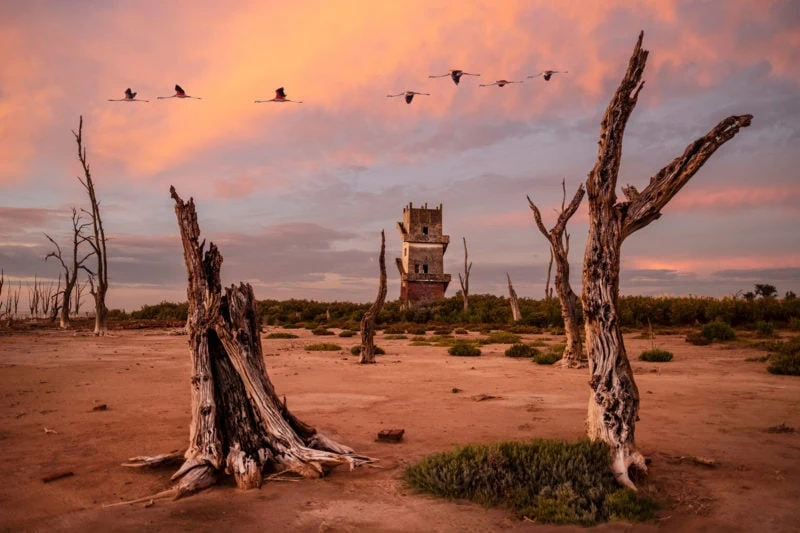

FLAMINGO PARADISE
Wildlife Photography Workshop
NEXT GROUP DATE:
To Be Defined
- INFO
- ITINERARY
- WHAT’S INCLUDED
- BOOKING CONDITIONS
Un hábitat único para los flamencos en Argentina
-
GÉNERO
Fauna, Paisaje
-
MEJOR TEMPORADA
Todo el año
-
DIFICULTAD
Fácil
-
GRUPO
Max 8
-
GÉNERO
Fauna, Paisaje
-
MEJOR TEMPORADA
Todo el año
-
DIFICULTAD
Fácil
-
GRUPO
Max 8
Mar Chiquita, también conocida como Mar de Ansenuza, es el lago salino más grande de Argentina y el quinto más grande del mundo. Este extraordinario ecosistema alberga una gran diversidad de aves, siendo el flamenco su residente más emblemático. A lo largo del año, se pueden observar colonias enteras desplazándose con elegancia por la orilla, creando escenas inolvidables para los amantes de la naturaleza.
Un verdadero paraíso para observadores de aves y fotógrafos de fauna, Mar Chiquita ofrece el escenario perfecto para capturar estas maravillas. Acompañados por un fotógrafo profesional y un guía local, navegaremos sus aguas para acercarnos con respeto a estas magníficas aves y obtener imágenes excepcionales.
De mayo a finales de octubre, y con un poco de suerte, podremos presenciar la espectacular danza de cortejo de los flamencos: una exhibición asombrosa en la que los machos, moviéndose al unísono en aguas poco profundas, estiran el cuello, baten las alas y realizan delicados gestos para atraer la atención de las hembras.

To book flights, please contact us before, we will help you coordinate schedules and transportation to get there. The nearest city is Cordoba.

Transportation to Miramar de Ansenuza is not included in the trip, and we will not be responsible for any delays or disruptions that are beyond our control. In any case, we will do what we can, given the circumstances, to help you.
We will meet at our hotel in Miramar, where the Lead Photographer will open the workshop with an introductory talk.
In the afternoon, we’ll explore the Gran Hotel Viena — an emblematic and mysterious landmark that was once a luxurious retreat — and learn about its fascinating history. We will also visit one of the first Croatian chapels in the province of Córdoba, a charming piece of the region’s cultural heritage.
As the day draws to a close, we’ll set up our tripods near the Casino Miramar Hotel to capture the stunning sunset over Laguna Mar Chiquita, a perfect ending to our first day.
Sunrise at Vidita Bay – “The Awakening of the Flamingos”
At first light, we will immerse ourselves in the world of the flamingos, venturing quietly into their habitat. Using camouflage techniques, we’ll blend into the environment, going unnoticed to capture intimate and striking images. This activity will be a true exercise in patience, rewarding us with the chance to observe the delicate behaviors of this majestic bird up close.
Afterward, we’ll stroll along the shoreline to photograph other migratory bird species that visit the bay.
We will then return to the hotel to relax, enjoy lunch, and recharge. Around 4:30 PM, we’ll gather to discuss the next activity, reviewing the techniques and settings we’ll apply.
Sunset at the Müller Colony
As the golden hour approaches, we’ll position ourselves in this captivating location — where the silhouettes of Ansenuza’s dry trees and the ruins of the old clinic create a dramatic frame for our images. When the blue hour arrives, we’ll enjoy a snack under the fading light, then stay to marvel at the star-filled sky and practice night photography.
Early in the morning, we will depart for the Club Náutico Miramar, where we’ll board our boat and begin our journey to Orihuela Island — a former estancia nestled in the southern reaches of Mar Chiquita.
We will navigate approximately 40 km across the lake until we reach our destination. Once ashore, we’ll set out on a guided walk to explore Ansenuza’s rich birdlife, spotting flamingos, plovers, and sandpipers — remarkable travelers that migrate thousands of kilometers from the United States and Canada.
Along the way, we’ll learn techniques for identifying and observing birds in their natural environment. After the walk, we’ll enjoy a well-earned snack to recharge, followed by a delicious lunch.
The afternoon will be free to relax on the beach and experience the unique buoyancy of Mar Chiquita’s hypersaline waters. This excursion opens the door to remote areas and unique habitats of the lake, deepening our appreciation of its crucial role as a sanctuary for thousands of birds throughout the year.
Early in the morning, we will set out to navigate the bay of the Xanaes River, one of the three main tributaries feeding Mar Chiquita Lake.
As we explore its tranquil waters, we’ll encounter a rich variety of bird species and witness impressive colonies of flamingos in their natural habitat. We’ll return to the hotel around midday, with free time to enjoy lunch at leisure.
With hearts and memory cards full, we’ll bid farewell — until our next workshop adventure!
IMPORTANT
The itinerary published on this page and on our PDFs/brochures is indicative. The guide reserves the right to make changes without prior notice, which may depend on various factors/events such as weather, geography, protests, medical emergencies, etc.
Changes are aimed at ensuring the safety of travelers and the success of the trip, always trying to maintain the proposed activities.
The Mar Chiquita Lake is one of the few places on Earth where three species of flamingos coexist, along with more than 300 bird species from across the Americas.
Price (based on 6 participants):
To be defined.
Single Supplement available.
What's included?
- Professional Photographer
- Local Certified Guide
- Small Group Size
- Analysis of the Work Done
- Accommodation for 3 Nights
- All Breakfasts + 1 Lunch + 2 Snacks
- All Excursions and Photography Activities
- Entrance Tickets to the Grand Hotel
What's not!
- Transport from your origin point to the Miramar
- Travel & Medical Insurance
- Personal Expenses
- Tips
Bookings
To book a workshop we ask for 30% deposit of the total.
The workshop balance must be paid 45 days before the start date. You can also pay in cash (USD or euros) upon arrival.
Cancellations & Refunds
For a workshop cancellation, a written notice is required. Please email your request to info@argentinaphotoworkshops.com.
We acknowledge the commitment involved in attending our workshops and strive to accommodate unforeseen circumstances.
Please review our Cancellation Policy below:
• Cancellation made more than 181 days before the workshop start date: 20% refund of any payments made.
• Cancellation made less than 180 days before the workshop start date: No refund of any payments made.
Please note the following:
• In the event that you are unable to attend, your paid balance will be credited for 1 year (from the date of the cancelled trip) as part of the payment of a workshop of your choice.
If the amount was paid in Argentine pesos, the equivalent in US dollars will be credited subject to the exchange rate on the day the trip was cancelled.
In case the workshop is cancelled by Argentina Photo Workshops due to reasons of force majeure:
• There will be a complete refund of the amount deposited.

5% EARLY BIRD DISCOUNT
Applies for bookings made more than 8 months in advance of the start date.
RECOMMENDED EQUIPMENT
Check out our guide on “How to Prepare for a Photography Workshop”, as well as information on equipment and FAQs below.
Near the date of the workshop, we will be in touch through a WhatsApp group, an ideal space to answer all kinds of questions before the trip and organize every detail. If necessary (upon request) we will also arrange a group video call via Google Meet for this purpose.
Although you can participate with any type of photographic device, we recommend a reflex or mirrorless camera, which allow much more freedom and creativity.
Considering the wide variety of photographic situations this workshop presents, it is advisable to have available focal lengths ranging from wide-angle (shorter distances) to telephoto (longer distances).
For Landscape Photography, we suggest a wide focal lenght: ideally around 15 – 50 mm. You can also get a good landscape with a longer focal length by using a stable tripod.
For night photos (Astrophotography) the shorter the focal length, the better. This makes it possible to include more elements in the frame.
For terrestrial wildlife, a 300mm or longer telephoto lens is the best choice.
Consider also buying a tele converter to increase the focal length of the lens: 1.4x or 2x. Even if with loss of luminosity.
Finally, choosing the right set of lenses is not easy. If you encounter difficulties and need some suggestions do not hesitate to contact us.
The most important feature of a tripod is its stability. Since every journey includes some trekking, we must also take into account the weight.
We suggest a good carbon tripod that maintains a good balance between weight and stability, that can easily change from one height to another and that locks in little space.
Aluminum is also fine, as carbon is generally much more expensive. We know that choosing a tripod is not easy and we are available to help you choose the right model for you.
A Polarizing filter will be very useful to neutralize water reflections in the lagoons.
For those who love Landscape Photography, ND filters with 6 or 8 steps will be also very useful to play with the movement of water and clouds.
It is recommended to carry UV or Skylight filters, useful to protect the lenses from Ultraviolet rays (even more important in these altitudes), dust and splashes.
Finding the right photo backpack can be a difficult challenge. We recommend you to rely on a brand with quality and experience in the market.
The type of backpack clearly depends on your equipment. But what really matters is that you feel comfortable with it and possibly fitted with a rain cover.
You can’t miss in your backpack: a cleaning kit for the lenses, a remote control to shoot without touching the camera, hood for the lenses (to avoid flare) and a robust / comfortable camera strap.
It is also important to take spare batteries and memory cards with you.
FREQUENTLY ASKED QUESTIONS
Of course, accompanying non-photographers are welcome. The price is the same.
Usually in a Photo Tour the Leading Photographers accompany to locations only, while in a Workshop you are also expected to receive technical notions to improve your photography. Both options, often confusing, are good. It depends on what one is looking for. Our activities are developed in both modes, depending on the trip.
The Mar Chiquita Lake is a unique habitat for many species of birds. Among them the flamingo.
It is possible to spot here 3 of the 6 species of flamingos existing in the world: the Chilean Flamingo, the Andean Flamingo and the James’s Flamingo.
The Chilean Flamingo is the most abundant species and is present all year round.
The Andean Flamingo arrives at Mar Chiquita regularly during the winter.
More sporadic and in lesser quantity is the presence of the James’s Flamingo.
About 142 species of seabirds can also be sighted, of which 73 (more than half) are permanent, the rest are migratory.
Source: “Bañados del Río Dulce y Laguna Mar Chiquita” – Bucher E.H. Ediciones (2006). Academia Nacional de Ciencias (Córdoba, Argentina).
It is advisable to bring a waterproof jacket or a windbreaker (especially useful during boat trips).
Hat, neck cover, and sunglasses.
Sturdy, comfortable footwear (hiking type) for walking.
Comfortable and robust backpack to carry your gear and protect it from dust, water and bumps.
Sunscreen and mosquito spray.
The round trip between your city of origin and Miramar is not included in the price.
However, we can coordinate it with the Tour Operator.
These activities require a lot of organization and are prepared well in advance. Weather is a factor we can’t predict, so the workshop/photo tour is not cancelled.
In any case, we will always be attentive to weather conditions to optimize the program and try to provide the best light conditions for photography.
Get more information about the Photo Tour, such as the cost of the next group workshop or a quote for a private adventure, just for you / your group.
GET MORE INFO
Join this Adventure!
RELATED ARTICLES
Mar Chiquita Lake: an oasis for flamingos in Argentina
The Mar Chiquita Lake is one of the largest saline wetlands...
Read More
